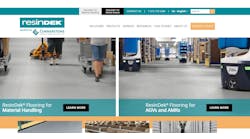Last year, we wrote an article expressing our view that increasing customer value, not cost-cutting, is the primary goal of any lean initiative. It seems, however, that too many manufacturing organizations still haven’t gotten that message.
Perhaps your company has applied lean methods for some time, and you can show that the improved flow of information and material within your organization has reduced lead times and improved quality. But are you certain that it’s easy for your customers to get access to those benefits?
Our guess is that many of you have applied lean concepts and methods to your own manufacturing processes, while ignoring the experience of existing and prospective customers as they try to work with you.
Much of Ron’s work entails procurement that involves internet research, obtaining quotes from electronics parts vendors and arranging quotes (multiple bids) from subcontractors to build system components for a major government program. That work is made all the more challenging by vendors who seem eager to hide behind their carefully crafted web pages rather than make it easy for prospective customers to get information.
Gone are the days of simply picking up the phone and calling a “customer service” number and speaking directly with someone who could help you with your inquiry.
In too many instances, even if a website shares a phone number, one must carefully listen to a long list of options to get to person who can share information. Gone are the days of having a default part of the tree that says, “If you would like to speak with an operator at any time, please press “0””.
Further, many vendors’ websites don’t even provide a phone number—instead, asking customers to “fill out a form” describing their needs, then wait in hope that someone will actually respond to their inquiry.
This isn’t only true of small vendors that might not have the resources to provide quick, around-the-clock responses to questions. Ron experiences this when attempting to contact large companies as well. He recently wrote to two potential vendors about his difficulty getting information. One is a U.S. company that had revenues of over $13 billion last year, the other a European firm that realized revenues of more than $21 billion in 2021. Both companies frequently tout their commitment to lean principles in their marketing materials.
The lack of response tells customers that, “We’re not interested in creating processes that reduce your wasted time.” It sends a message that “We’re willing to make the customer’s experience more difficult, more frustrating if it provides efficiencies for us?” Several years ago, Rick worked for a client that had received complaints like those Ron sent out. One customer told the client: “We like your service once we can actually get in touch with someone who can help us. But that first step is very frustrating, and sometimes we just give up trying and decide simply to live with our problem rather than to keep trying to get help from you.” Long “on hold” periods and dropped calls were frequent complaints. With Rick’s guidance, the client pulled together a team to map the process that customers experienced when they called for help or information. After looking at the finished “current state” map, one of the team members exclaimed, “It’s a wonder any of our customers stick with us after going through all that just to get a question answered.”
The team developed a new process and new procedures in which a customer’s call was always answered by a live voice, then, after they answered a few quick questions about their issue, was always transferred directly to someone who could provide help.
The complete solution required the development of appropriate materials and an education initiative. The change required an investment of time, energy and a small budget to implement. There were no tangible “cost savings” that came from the new process. There was, however, an improvement to the value customers experienced that they noticed and acknowledged.
Let’s go back to our original question: Is your customer service lean? It’s not lean because you’ve improved your own efficiencies, reduced your own costs, improved your own convenience in dealing with customers. It’s only lean if you can show that you’ve designed and deployed processes that make the customer’s experience better.
Ron Jacques is a 35-year veteran within the lean, manufacturing and consulting arenas. He is a Certified Lean Practitioner who has delivered hundreds of kaizen and transformational solutions to clients and companies within the Pharma, Medical Device, Automotive, Food/Beverage, Electronics, Military Defense, Personal Care, Consumer Durables and Capital Equipment industries.
Rick Bohan, principal, Chagrin River Consulting LLC, has more than 25 years of experience in designing and implementing performance improvement initiatives in a variety of industrial and service sectors. He is also co-author of People Make the Difference: Prescriptions and Profiles for High Performance.




